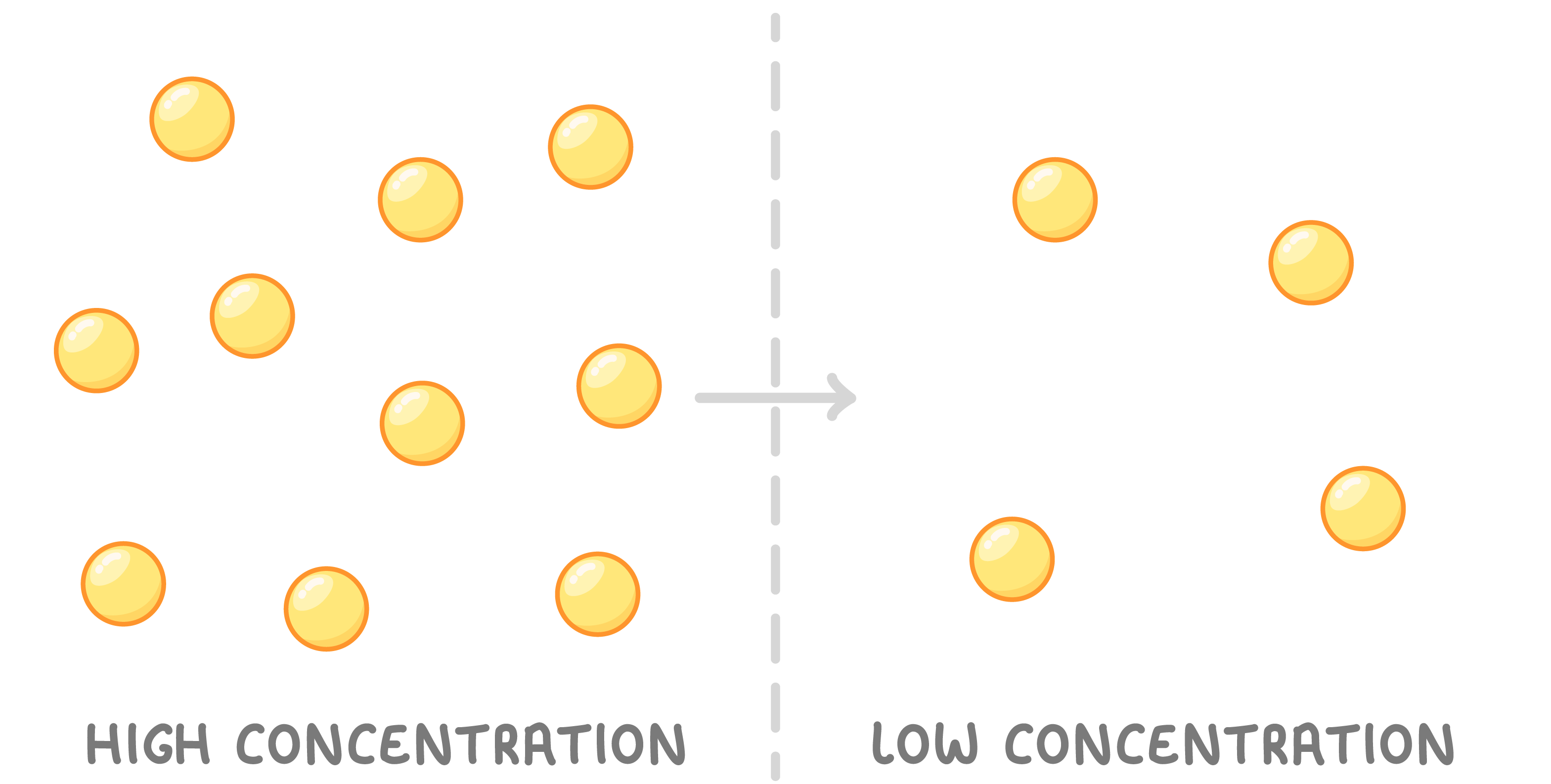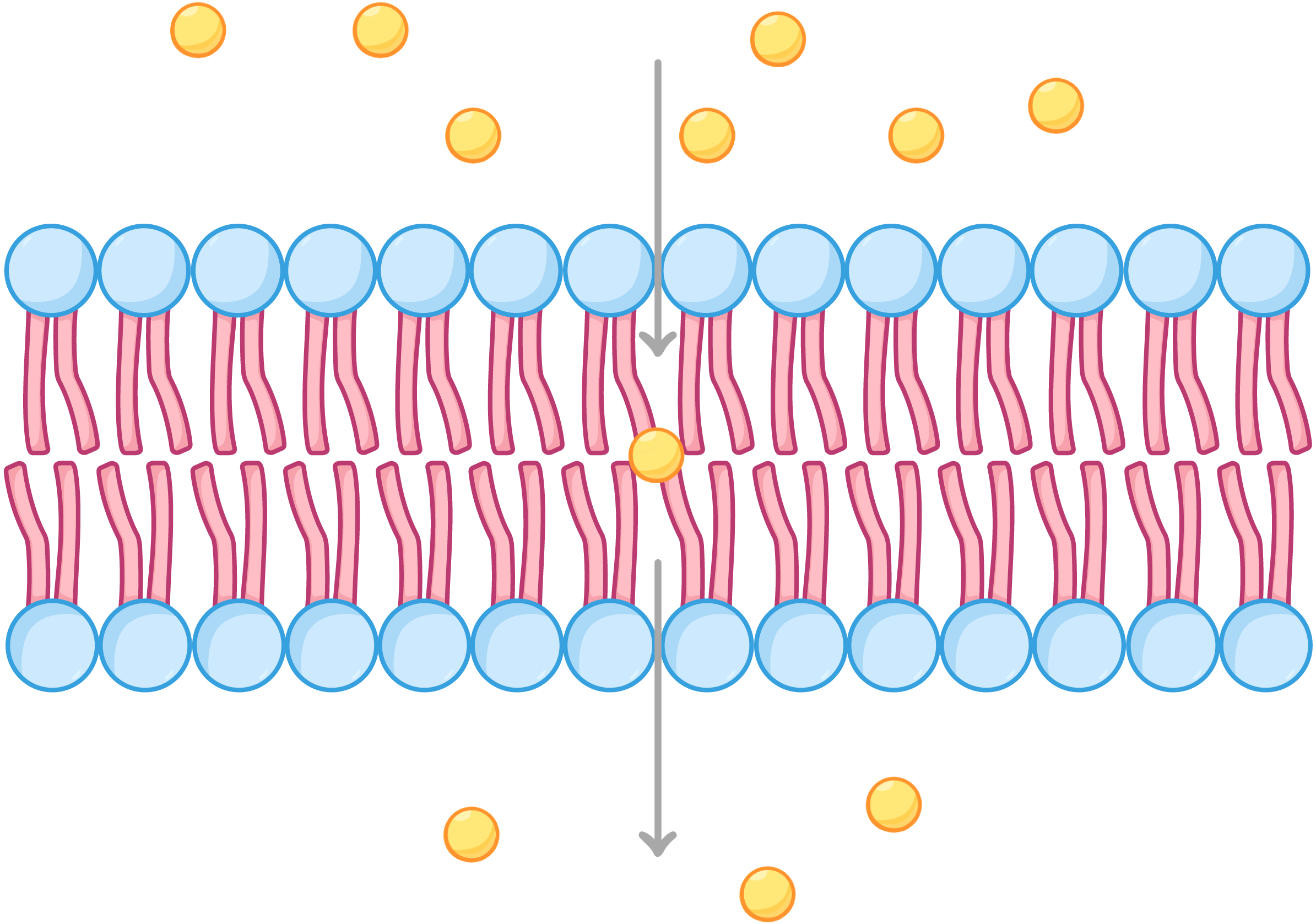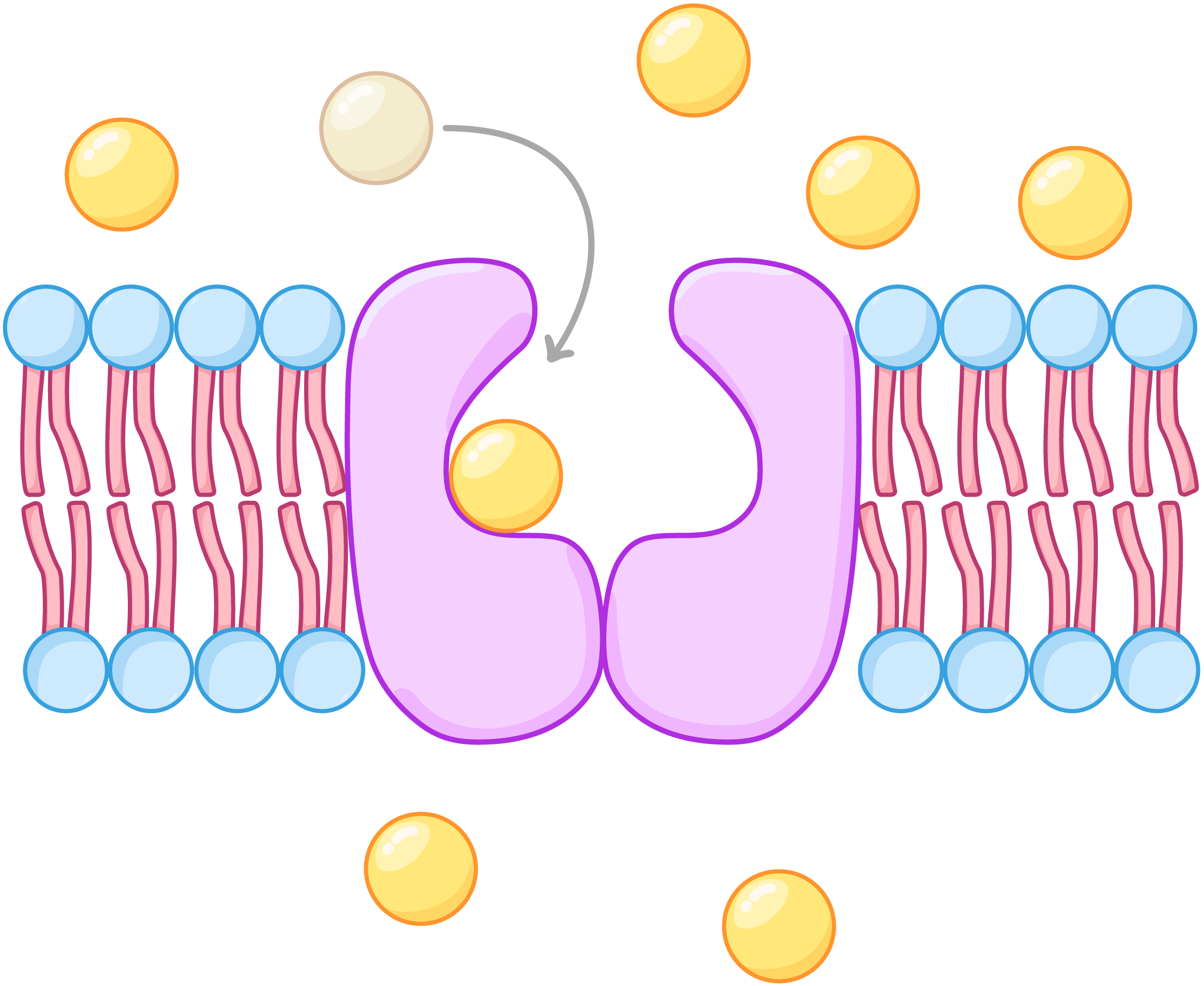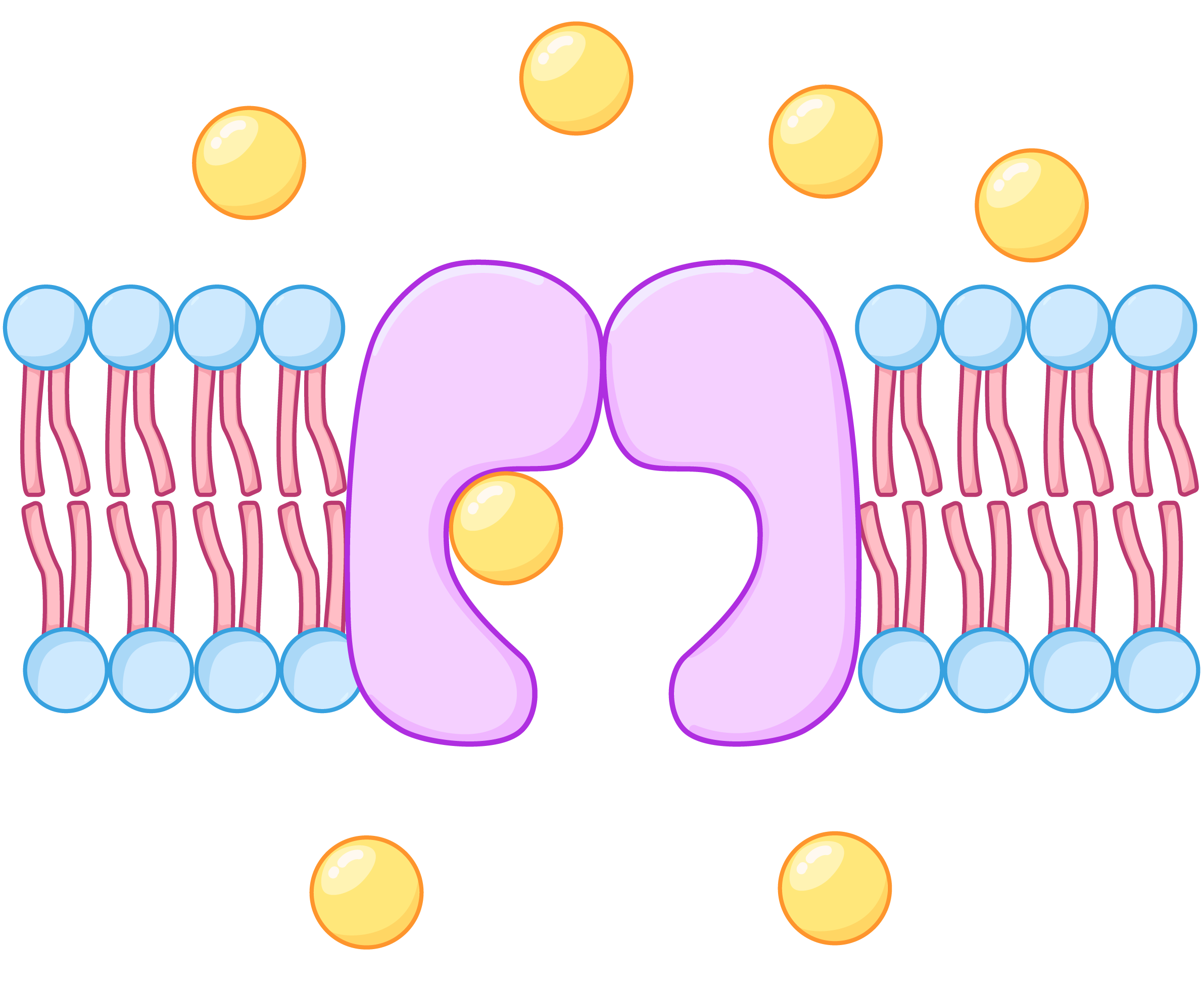Diffusion
This lesson covers:
- The process of simple diffusion
- The process of facilitated diffusion
- How different factors affect the rate of diffusion
Diffusion Diffusion is the net movement of particles from an area of higher concentration to an area of lower concentration.  |
Particles diffuse down a concentration gradient and eventually reach equilibrium in which all particles are evenly distributed (but still moving). Diffusion does not require energy and so is described as a passive process. |
You need to know about two types of diffusion:
|
Simple diffusion Some molecules can diffuse directly across cell membranes in a process known as simple diffusion. |
 |
Oxygen and carbon dioxide can diffuse into cells via simple diffusion. This is because they are:
|
Facilitated diffusion Large or polar molecules can cross cell membranes in a process known as facilitated diffusion. Facilitated diffusion involves two types of proteins:
Each carrier or channel protein is highly specific, allowing only one or two types of molecule to pass through. |
Carrier proteins Carrier proteins transport large molecules across the cell membrane. They work in the following way: |

|
Channel proteins Channel proteins transport ions across the cell membrane.  |
These proteins form pores in the cell membrane, which ions can travel through. |
Factors affecting the rate of diffusion
|

